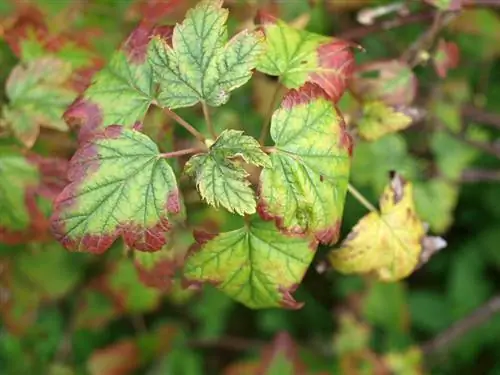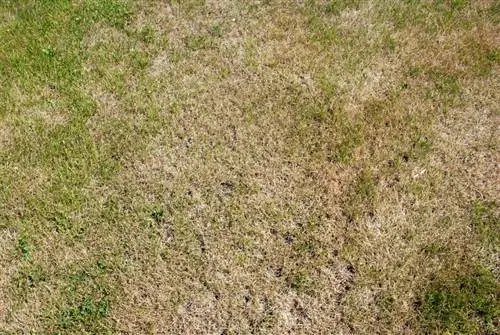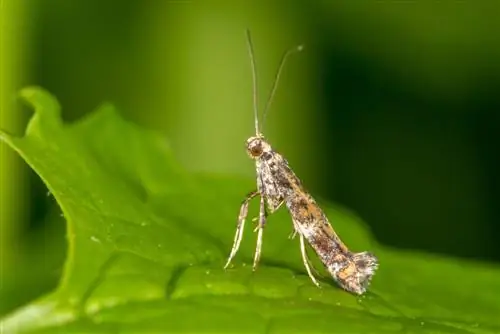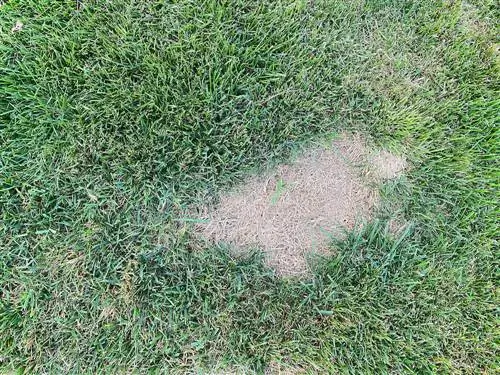- Author admin [email protected].
- Public 2023-12-16 16:46.
- Last modified 2025-01-23 11:20.
Will the lovingly cared for lawn suddenly be spoiled by brown spots, ugly rings and other miseries? Then there are usually lawn diseases behind it. Here we explain how to recognize the most common infections and give tips for treatment.

How do I recognize and treat lawn diseases?
Common lawn diseases include snow mold, typhula blight, brown patch, yellow patch and witch's rings. You can recognize this by discoloration and spots in the lawn. You can prevent it by scarifying, sanding, aerating and adequately watering. If there is an infestation, you should specifically treat the affected areas, often by loosening them, filling them with sand and reseeding.
Snow mold (Fusarium nivale) and typhula blight (Typhula incarnata)
If the lawn remains under a blanket of snow for a long time in winter, snow mold and typhula rot will strike. These are two fungal infections that find ideal conditions at 0 to 8 degrees Celsius. You can recognize the diseases by round, grayish-white spots that gradually turn brown. In the absence of approved fungicides, control is limited to the following preventative measures:
- Scarify the lawn every spring
- Consistently sweep away leaves and clippings
- Do not use nitrogen-based fertilizer
The most effective way to combat these lawn diseases is summer weather. As soon as the mercury column exceeds 20 degrees, the brown spots disappear.
Brown Patch (Rhizoctonia solani) and Yellow Patch (Rhizoctonia cerealis)
While beautiful summer weather gives the all-clear for snow mold, the next lawn diseases are already lurking. Brown patch defaces the well-kept green area at temperatures of 25 to 30 degrees Celsius, visible in putrid brown to reddish spots. When temperatures hover around 20 to 25 degrees, Yellow Patch strikes with yellow-brown spots. Once again, the focus is on prophylaxis for successful combat. This is how it works:
- Sand the lawn after scarifying
- Never water more than absolutely necessary
- Aerate the grass area once a year
If a lawn is infested or threatened by fungi, the dosage of irrigation becomes additionally relevant. Since the fungal pathogens prefer a warm, humid environment, summer drought suits the troubled gardener very well. Of course, the lawn needs to be watered so that it doesn't dry out completely. Therefore, avoid watering that results in puddles forming on the lawn.
Witch rings (Marasmius oreades and others)
In earlier times they were said to have magical powers. In fact, witch rings are a fungal infection that occurs regardless of the weather. You can recognize the lawn disease by dark green rings, in the center of which the stalks turn brown. As the progress continues, the lawn dies here. This is how you take targeted action against witch rings:
- Use the digging fork to loosen up the affected areas to a depth of about 15 cm
- Fill the resulting holes with sand
- Then distribute reseeding and fertilizer on top
Given the high infestation pressure, you cannot avoid radical soil replacement. In this case, dig the damaged areas 15-20 cm deep and fill them with compost and sand. The reseeding is spread over this. It's even quicker by closing the gaps with pieces of turf.
Tips & Tricks
The magic lawn patch has proven itself to be ideal for repairing individual damaged areas in the lawn in a short time. Simply remove the dead grass spots up to 20 centimeters beyond the ring. Spread the lawn paving 3 millimeters thick and water it. The mixture consists of quickly germinating lawn seeds, coconut flakes and fertilizer and thrives in any normal garden soil.






